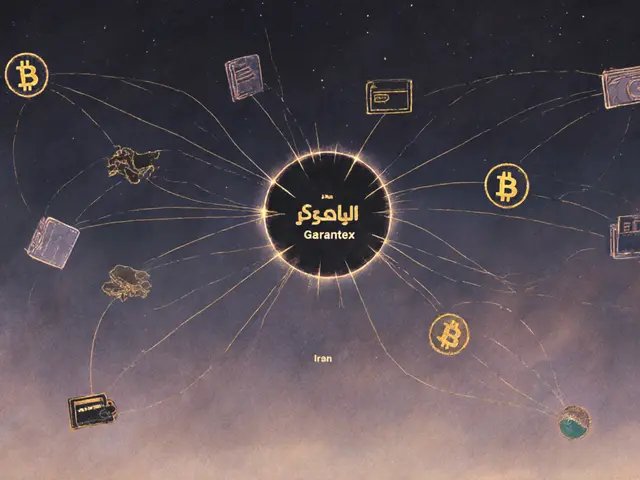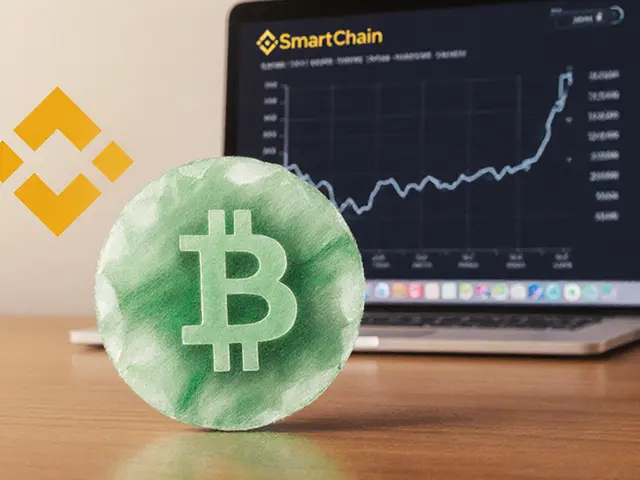How $15.8 Billion in Sanctioned Crypto Transactions Shaped 2024's Financial Crackdown

Sanctioned Crypto Risk Calculator
Risk Assessment
For the first time, over $15.8 billion in cryptocurrency flowed to entities and countries under U.S. sanctions in 2024. That’s not just a number-it’s a signal. The world’s financial system is changing, and digital assets are becoming the hidden arteries of sanctioned economies. Whether it’s Iran bypassing banking restrictions, Russian ransomware gangs moving loot, or darknet markets trading in Bitcoin, the crypto ecosystem is no longer just a tool for speculators. It’s now a critical part of global financial warfare.
Who’s Really Getting the Money?
The $15.8 billion didn’t spread evenly. Most of it came from just two sources: sanctioned countries and the criminal networks tied to them. Iran led the charge, with its centralized exchanges like Nobitex and Garantex seeing massive inflows. People there aren’t just trading crypto for profit-they’re using it to move savings out of the country as inflation and sanctions squeeze the rial. Transactions from Iranian wallets jumped sharply in 2024, with patterns showing capital flight rather than speculation. Russia remained a major player too. Over $800 million in ransomware payments-up 22% from 2023-were routed through wallets linked to Russian actors. Ransomware gangs like Conti, LockBit, and Black Basta didn’t disappear. They just switched payment methods. Bitcoin became their preferred currency, making up 68% of all sanctioned transactions. Ethereum followed at 20%, while stablecoins like USDT handled the rest-mostly because they’re easier to move quickly and convert into cash. Darknet markets also contributed $1.1 billion to the total. Russia-based marketplaces were the biggest offenders, selling drugs, stolen data, and hacking tools in exchange for crypto. These aren’t small-time operations. Many are organized, well-funded, and have ties to state-backed actors.The Exchanges That Made It Possible
You can’t move billions without infrastructure. And in 2024, two exchanges stood out as the main pipelines: Garantex and Nobitex. Together, they handled over 85% of all crypto inflows to sanctioned entities. Garantex, in particular, became a target for U.S. authorities. The Treasury Department officially sanctioned it in 2024 after tracing millions in ransomware payments directly to its platform. One of its users, money launderer Ekaterina Zhdanova, converted over $2 million in Bitcoin into Tether through Garantex-clearly trying to launder funds under the radar. These exchanges didn’t operate in the open. Many were based in jurisdictions with weak oversight, using shell companies and offshore registration to avoid detection. They offered fast deposits, low KYC, and support for privacy-focused coins. For sanctioned actors, that’s the perfect combo.DeFi and Cross-Chain Bridges: The New Evasion Tools
Traditional exchanges aren’t the only way criminals move money anymore. Decentralized Finance (DeFi) platforms became a major channel in 2024. About 33% of all illicit crypto funds passed through DeFi protocols-up from just 18% in 2023. Why? Because DeFi has no central boss. No CEO to subpoena. No customer database to hand over. Liquidity pools, automated market makers, and yield farms became invisible money changers. OFAC flagged 150 DeFi liquidity pools in 2024 for helping sanctioned wallets move funds. These pools didn’t know they were being used-most didn’t even have the ability to block transactions. That’s the problem with decentralization: it’s hard to police when no one’s in charge. Cross-chain bridges were another growing loophole. In 19% of all sanctioned transactions, funds jumped from one blockchain to another-Bitcoin to Ethereum, then to Solana, then to a privacy coin-making it nearly impossible to trace the full path. These bridges are supposed to connect networks for user convenience. Instead, they became digital smuggling routes.
Why Bitcoin Still Rules the Sanctioned World
Bitcoin isn’t the most private coin. Monero or Zcash are better for hiding transactions. But Bitcoin still dominates sanctioned activity because it’s the most liquid. You can turn Bitcoin into cash faster, anywhere in the world. Exchanges, ATMs, peer-to-peer networks-they all support BTC. That’s why 68% of all sanctioned crypto transactions were in Bitcoin. Even more telling: 55% of the wallets involved in these transactions handled over $500,000 each. These weren’t random users. These were professional operators-money launderers, ransomware crews, state-backed hackers. They knew how to layer transactions, use mixers, and time their moves to avoid detection.The Bigger Picture: Illicit Crypto in 2024
The $15.8 billion in sanctioned activity made up nearly 39% of all illicit crypto transactions in 2024. Total illicit volume was estimated between $40 billion and $45 billion, depending on who you ask. Chainalysis, TRM Labs, and CoinLaw.io all saw different numbers-but they all agreed on one thing: sanctions-related crypto was the biggest driver of illicit activity. Fraud and scams dropped sharply-down 40% to $10.7 billion-thanks to better public awareness and platform crackdowns. Pig butchering scams, which tricked people into investing in fake crypto schemes, fell by 58%. But sanctions-related flows didn’t drop. They grew. That tells you where the real threat lies: not in random scammers, but in organized, well-funded, geopolitically backed operations.
How Authorities Are Fighting Back
The U.S. Treasury’s Office of Foreign Assets Control (OFAC) didn’t sit still. In 2024, they added 13 cryptocurrency addresses to their sanctions list-the second-highest number in seven years. They didn’t just freeze wallets. They targeted the infrastructure. Garantex was sanctioned. DeFi pools were flagged. Wallets linked to ransomware gangs were blacklisted. Blockchain analytics firms like Chainalysis and TRM Labs helped by tracking transaction patterns across millions of addresses. They identified clusters of wallets that acted like networks-sending small amounts to multiple addresses, then consolidating them elsewhere. AI tools now spot these patterns faster than ever. But here’s the catch: total crypto transaction volume hit $10.6 trillion in 2024. That’s up 56% from 2023. Trying to monitor every transaction is like trying to track every drop of water in the ocean. Authorities can only focus on the biggest flows-the ones that move millions, not thousands.What’s Next? The Arms Race Continues
The next few years will be defined by a tech arms race. Sanctioned entities are already experimenting with privacy coins, new cross-chain bridges, and AI-driven transaction obfuscation. Some are even exploring tokenized real-world assets to mask the origin of funds. Regulators are responding with better tools, international cooperation, and new legal frameworks. The EU and U.S. are working on shared sanctions lists for crypto addresses. Some countries are pushing for mandatory blockchain monitoring tools on all exchanges. But here’s the reality: as long as crypto offers anonymity, speed, and global access, sanctioned actors will keep using it. The goal isn’t to stop all illicit activity-that’s impossible. The goal is to make it harder, slower, and riskier. And in 2024, the cost of doing business in sanctioned crypto went up. A lot.What This Means for Regular Users
If you’re just buying Bitcoin or trading Ethereum, you probably won’t be affected. But if you’re using an exchange with weak KYC, or sending crypto to a wallet you don’t know, you could be unknowingly involved. Many exchanges now screen incoming transactions. If your wallet receives funds from a sanctioned address-even once-it could get flagged or frozen. Always use reputable exchanges. Avoid peer-to-peer trades with strangers. Don’t send crypto to wallets linked to darknet markets or unknown DeFi pools. It’s not just about safety-it’s about compliance. The era of crypto as a wild west is over. 2024 proved that. The rules are being written now. And the people who ignore them will pay the price.What does $15.8 billion in sanctioned crypto transactions mean?
This figure represents the total value of cryptocurrency received by entities and countries under U.S. sanctions in 2024, according to Chainalysis. It includes funds flowing to Iran, Russia-linked ransomware groups, and darknet markets. This amount made up nearly 39% of all illicit crypto activity that year, showing how digital assets are now central to sanctioned financial operations.
Why is Bitcoin the top cryptocurrency in sanctioned transactions?
Bitcoin is the most liquid and widely accepted crypto asset globally. Even though privacy coins exist, Bitcoin can be quickly converted into cash through exchanges, ATMs, and peer-to-peer networks. Its widespread adoption makes it the preferred choice for criminals and sanctioned actors who need to move large sums without getting stuck.
Which exchanges were involved in sanctioned crypto flows?
Garantex and Nobitex handled over 85% of all crypto inflows to sanctioned entities in 2024. Garantex was officially sanctioned by the U.S. Treasury for facilitating ransomware payments and laundering funds for known criminal actors. These exchanges operated with minimal KYC checks and targeted users in high-risk regions.
How are DeFi platforms being used for sanctions evasion?
DeFi platforms allow users to trade, lend, and borrow crypto without intermediaries. In 2024, 33% of illicit crypto funds passed through DeFi protocols, often using liquidity pools to mix funds and obscure their origin. Since these platforms have no central authority, regulators can’t easily freeze accounts or block transactions.
Can regular crypto users get caught up in sanctions enforcement?
Yes. If your wallet receives funds from a sanctioned address-even indirectly-some exchanges may freeze your account or block future transactions. This happens because exchanges use blockchain analytics tools to screen incoming deposits. Always use trusted platforms and avoid unknown wallets or peer-to-peer trades with unverified parties.
Is crypto regulation getting stricter in 2025?
Absolutely. Governments are expanding international cooperation, creating shared sanctions lists for crypto addresses, and requiring exchanges to implement stricter monitoring tools. New legal frameworks are being drafted to treat crypto transactions like traditional financial flows. Compliance is no longer optional-it’s mandatory for any serious platform.







So let me get this straight - we’re treating crypto like it’s some kind of underground banking system, but the real issue is that governments still think they can control money with spreadsheets and sanctions lists?
It’s like trying to stop water with a net. The more you try to block it, the more it finds new cracks. Bitcoin isn’t the problem - it’s the symptom. The real problem is a global financial system that’s broken, and people are just using what’s available to survive.
Iranians aren’t ‘sanctioned actors’ - they’re moms buying rice. Russian hackers aren’t ‘state-backed’ - they’re just guys with laptops and a grudge. We keep labeling people as threats instead of asking why they’re forced into these corners.
And don’t even get me started on DeFi. No central authority? Good. That’s the whole point. If you want to stop bad actors, fix the banks. Don’t punish innovation because your old systems are crumbling.
Sanctions are just modern-day embargoes wrapped in legal jargon. They hurt civilians. They don’t stop regimes. And now they’re just pushing people into crypto because it’s the only thing left that doesn’t need permission to work.
We’re not winning this war. We’re just making the world more desperate. And desperation doesn’t care about your compliance forms.
39% of illicit crypto is from sanctioned flows? That’s a cherry-picked stat. Total illicit volume is estimated between $40B–$45B, but Chainalysis’s methodology is flawed - they inflate numbers by counting every wallet that ever touched a sanctioned address, even once.
Also, Bitcoin dominance? Of course. It’s the USD of crypto. But that doesn’t mean it’s ‘used for crime’ - it means it’s the most liquid. Same reason cash is used in drug deals.
Stop acting like crypto is uniquely dangerous. The real crime is the $1.2 trillion in illicit cash flows through traditional banking that never gets audited.
This article is fearmongering dressed up as analysis.
in india we see this every day - people send crypto to family abroad because banks block transfers. not for crime, just to survive.
garantex? maybe shady. but what choice do people have when their own banks say ‘no’?
we need better systems, not more sanctions. sanctions hurt the poor, not the rich.
also, why do we always blame tech when the problem is politics?
Real talk: if you’re using crypto for anything beyond trading, you’re already walking a tightrope.
Use exchanges with KYC. Avoid P2P with strangers. Don’t touch wallets with red flags.
It’s not about fear. It’s about staying clean.
One bad transaction can freeze your account for months. Not worth it.
OMG I just found out my uncle sent me $5k in BTC last year and it came from a ‘sanctioned’ wallet 😱
Now my exchange is holding my funds and I can’t even buy Dogecoin 😭
WHY IS THIS HAPPENING TO ME??
Someone help!!
in my village in Punjab, people send crypto to relatives in Canada because wire transfers take weeks and cost 15%.
they don’t know about sanctions. they just want to help family.
the system isn’t broken because of crypto - it’s broken because banks are slow and greedy.
maybe we should fix the banks instead of blaming the tools people use to survive.
What we’re witnessing here isn’t merely a shift in financial architecture - it’s a paradigmatic rupture in the ontological status of value itself.
Traditional fiat systems operate under the epistemic assumption of centralized legitimacy - a sovereign authority that confers legitimacy via institutional fiat.
Crypto, by contrast, introduces a distributed ontology of value - one that is emergent, non-hierarchical, and resistant to top-down epistemic control.
The $15.8B in sanctioned flows isn’t ‘illicit’ - it’s a performative act of epistemic disobedience.
Sanctions are the last gasp of a failing hegemonic order. Crypto is the new substrate of post-sovereign exchange.
Those who call it ‘criminal’ are merely projecting their own institutional anxiety onto a decentralized network they cannot comprehend.
Let’s be clear: this isn’t about ‘financial warfare.’ It’s about traitors and enemies of the United States using American technology to undermine our national security.
Garantex? Sanctioned. Good.
DeFi? Should be banned.
Bitcoin? It’s a tool of the Kremlin and the mullahs. We need to outlaw it entirely.
Our soldiers die for freedom. These criminals use crypto to fund terror. There’s no middle ground.
If you’re not with us, you’re with them. And if you’re using crypto without a government license? You’re part of the problem.
For regular users: if you're using a reputable exchange like Coinbase, Kraken, or Binance US, you're safe. These platforms scan incoming transactions and block flagged addresses.
If you get a deposit from a wallet linked to ransomware or a sanctioned exchange, your account might get flagged - even if you didn't know.
Best practice: never accept crypto from unknown sources. Use only verified wallets. Keep records.
It’s not complicated. Just be smart.
the fact that people are using crypto to send money to family in Iran or Russia because their banks won't let them... that's not criminal
it's human
we need to stop treating survival as a crime
and maybe ask why the system forces people into these choices
Let me just say - this whole thing is a Hollywood script written by the Pentagon.
‘Crypto = evil.’ ‘Bitcoin = terrorist cash.’ ‘DeFi = the new Wild West.’
Newsflash: the entire global financial system is built on lies, shell companies, and offshore tax havens worth $32 trillion.
But hey - let’s panic about some guy in Tehran sending 0.3 BTC to his cousin. That’s the real threat.
Meanwhile, JP Morgan moves $200B in ‘clean’ money through Luxembourg every day. No one bats an eye.
Double standards. Always.
So what? You think the government should just let criminals run free? Iran’s got nukes. Russia’s bombing Ukraine. And you’re worried about people’s wallets?
Sanctions are the only tool we have. If crypto lets them bypass it? Then crypto needs to die.
It’s not about freedom. It’s about survival.
And if you’re defending crypto because ‘it’s for the people’ - you’re either naive or complicit.
Wake up.
We’re at war.
crypto is wild but honestly? it’s kinda cool that people found a way to move money when the system said no.
not saying it’s perfect - but it’s real.
we’re not going to stop it.
so let’s make it safer, not just punish it.
✌️
my friend in Ukraine got paid in crypto after his bank froze his account. he used it to buy medicine for his kids.
he didn’t know about sanctions.
he just needed to eat.
we keep calling people criminals when they’re just trying to live.
maybe the system needs to change - not the people using it.
just saying.
EVERYTHING IS A LIE.
Chainalysis is owned by the CIA.
Garantex was framed.
Bitcoin is being used by the Illuminati to track you.
They’re putting microchips in your wallet addresses.
They’re using AI to predict your next transaction.
They’ve already mapped every single BTC wallet since 2012.
They’re coming for your crypto.
And your dog.
And your toaster.
DO NOT TRUST ANYTHING.
BUY MONERO.
OR DIE.
so like... if i send 0.1 btc to a friend who later got flagged for ransomware... does that mean i’m guilty?
what if i didn’t know?
what if i just sent it for rent?
why do i have to be a blockchain detective just to pay someone?
this system is broken.
and honestly? i’m tired of being punished for being poor.
why is everyone so obsessed with crypto? it’s just digital gold.
and who cares if iran gets a few billion? they’re already broke.
the real problem is the fed printing trillions.
but no one talks about that.
so yeah.
sanctions are useless.
and this article is just fear porn.
in india we have people sending crypto to pakistan for medical help, to afghanistan for food, to syria for education.
they don’t care about sanctions.
they care about people.
the banks won’t help.
the governments won’t help.
so they use crypto.
is that wrong?
or is the system wrong?
i think we need to ask that question before we start banning things.
also, i think garantiex is bad but maybe the real issue is that no one made a good alternative for the people who need it.
we punish the tool, not the cause.
and that’s why nothing changes.
And here’s the kicker - the U.S. government has spent $2 billion on blockchain analytics tools in the last 5 years.
They’ve flagged tens of millions of wallets.
And yet, total illicit crypto volume is still growing.
Meanwhile, the amount of money laundering through traditional banks? Untracked. Unaudited. Unpunished.
So who’s really failing?
Not the users.
Not the tech.
Us.
We’re trying to police a decentralized network with 19th-century tools.
And we’re mad when it doesn’t work.